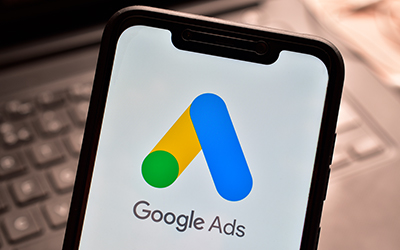Top Graduate School Myths in 2024
 Higher education, including graduate schools, sometimes gets a bad rap. All too often, prospective students assume graduate school isn’t for them because of some persistent myths and skepticism about higher education. However, higher education institutions can dispel these graduate school myths by communicating their value to prospects clearly and effectively.
Higher education, including graduate schools, sometimes gets a bad rap. All too often, prospective students assume graduate school isn’t for them because of some persistent myths and skepticism about higher education. However, higher education institutions can dispel these graduate school myths by communicating their value to prospects clearly and effectively.
Here are three common myths that grad schools should address with their marketing content to put prospects’ minds at ease.
1. Grad schools aren’t worth the investment
One of the biggest misconceptions about grad schools (and higher education in general) nowadays is that it isn’t worth the investment.
On the contrary, obtaining a Master’s Degree translates into $3.2 million in lifetime earnings compared to $2.8 million in lifetime earnings for a Bachelor’s Degree holder. MBA graduates from the top 50 business schools in the United States, more specifically, will see a staggering $5.7 million in lifetime earnings.
Clearly, obtaining a graduate-level degree is worth the investment. To counter the myth that grad schools aren’t worth students’ time and money, higher education institutions should focus their marketing messaging and content around the value that an advanced degree brings to help prospects see that their hard work and financial investment in grad school is worth it.
2. Grad school is unaffordable
While it’s true that graduate school isn’t cheap, many financial aid resources exist to help students pay for the cost.
Loans, grants, scholarships, and academic fellowships are readily available to help students lower their tuition and overall grad school costs. In some cases, grad programs at certain institutions are fully funded, meaning that students graduate essentially debt-free. Plus, it’s important to remember that graduate degree recipients enjoy higher lifetime earnings compared to those without them, meaning that even though their initial upfront investment may be higher, the long-term financial payoff is worth it.
For graduate schools like yours, it’s important to communicate these financial resources in your marketing materials as a way to entice prospective students and convey that, even though the upfront costs may seem intimidating, financial help is available in many forms.
3. A full-time job makes it impossible to attend graduate school
Finally, another graduate school myth worth dispelling is that having a full-time job makes it virtually impossible to attend school at the same time.
This myth lies in the common misconception that graduate school is the same as college when it comes to time investment. However, the truth is that the vast majority of graduate schools tailor their programs with working professionals already in mind. That means that classes are more sporadic, often meeting just once or twice a week, and typically in the evening hours or on weekends to accommodate working professionals. In addition, many grad schools have increasingly adopted hybrid and remote options in the wake of the COVID-19 pandemic, offering even more flexibility for grad school students.
To boost enrollment, it’s important for grad schools to bust this myth in particular. Marketing content in the form of blog posts, landing pages, social media posts, email communications, infographics, videos, and more are all ways to convey the flexibility and student-friendly options that current grad school programs offer.
Convey value to prospects to debunk graduate school myths
While it’s no secret that higher education, including grad schools, has faced strong headwinds due to factors like rising costs and alternative career options for prospects, their future is still bright. By working to dispel these common graduate school myths, schools can position their marketing campaigns for success and stand a better chance of converting prospects into students.
Looking to boost your conversions and optimize your marketing efforts? Contact GPRS today to find out how we can help.

 Specialized MBA programs remain a popular option for graduate school students, but growing enrollment can be difficult. It’s no secret that competition for prospects is fierce and finding the right recruits can be tricky, so higher education institutions need to implement the right strategies and best practices to grow enrollment in your specialized MBA program.
Specialized MBA programs remain a popular option for graduate school students, but growing enrollment can be difficult. It’s no secret that competition for prospects is fierce and finding the right recruits can be tricky, so higher education institutions need to implement the right strategies and best practices to grow enrollment in your specialized MBA program. As 2024 dawns, higher education institutions all across the country are hard at work preparing for the next wave of graduate school students with marketing and recruitment efforts. But what do grad students really want in 2024?
As 2024 dawns, higher education institutions all across the country are hard at work preparing for the next wave of graduate school students with marketing and recruitment efforts. But what do grad students really want in 2024? Paid search ads (also known as pay-per-click, or PPC ads) can be a powerful marketing tool for graduate schools for many reasons. How so? Paid search best practices and strategies for grad schools allow for specific demographic targeting based on specific criteria, can be turned on to generate leads almost instantly, and offer a lot of flexibility when it comes to crafting your messaging and marketing goals, such as boosting brand awareness,
Paid search ads (also known as pay-per-click, or PPC ads) can be a powerful marketing tool for graduate schools for many reasons. How so? Paid search best practices and strategies for grad schools allow for specific demographic targeting based on specific criteria, can be turned on to generate leads almost instantly, and offer a lot of flexibility when it comes to crafting your messaging and marketing goals, such as boosting brand awareness,  Although social media has been all the rage over the past few years when it comes to marketing to prospective graduate school students, email remains a very cost-effective and reliable method for communicating with prospects. As with all forms of marketing, email marketing has changed a lot over the years, meaning that higher education institutions need to know the current best practices and strategies to ensure that they’re using it effectively for grad school email marketing.
Although social media has been all the rage over the past few years when it comes to marketing to prospective graduate school students, email remains a very cost-effective and reliable method for communicating with prospects. As with all forms of marketing, email marketing has changed a lot over the years, meaning that higher education institutions need to know the current best practices and strategies to ensure that they’re using it effectively for grad school email marketing. The way higher education institutions market themselves to prospects has changed dramatically in a short amount of time. The rise of social media and the growing importance of content marketing, especially video marketing, has forced colleges to grapple with new ways to improve their university’s brand awareness and reach prospects effectively.
The way higher education institutions market themselves to prospects has changed dramatically in a short amount of time. The rise of social media and the growing importance of content marketing, especially video marketing, has forced colleges to grapple with new ways to improve their university’s brand awareness and reach prospects effectively. Higher education is constantly changing, with each year ushering in new challenges – but also new opportunities. The COVID-19 pandemic and its aftermath both sparked, as well as accelerated many notable trends. Following are higher education trends to watch in 2024 that are likely to impact undergraduate and graduate programs.
Higher education is constantly changing, with each year ushering in new challenges – but also new opportunities. The COVID-19 pandemic and its aftermath both sparked, as well as accelerated many notable trends. Following are higher education trends to watch in 2024 that are likely to impact undergraduate and graduate programs. Content is king when it comes to promoting a university to a target audience – but just how do you go about higher education content marketing effectively?
Content is king when it comes to promoting a university to a target audience – but just how do you go about higher education content marketing effectively?
